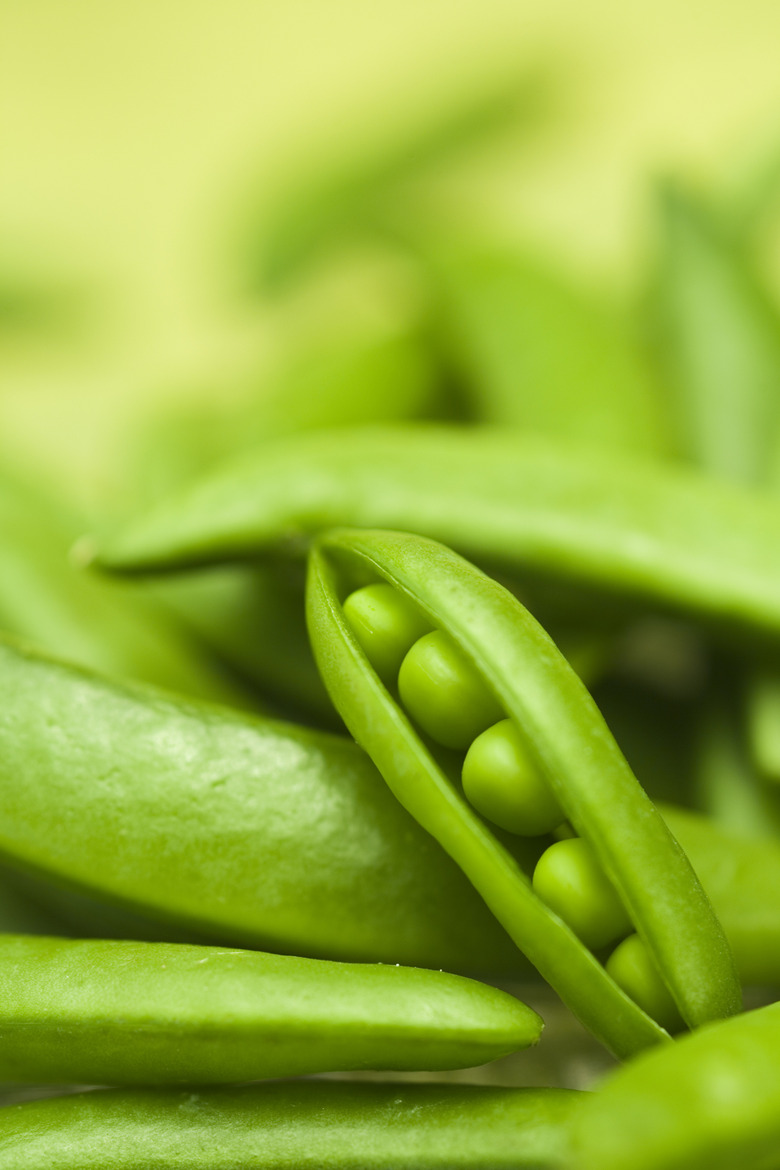What Is The Genotypic Ratio In The F2 Generation If Two F1 Hybrids Are Crossed?
The study of genotypic ratios dates back to the work of Gregor Mendel in the 1850s. Mendel, known as the father of genetics, performed a comprehensive set of experiments crossing pea plants that had various different characteristics. He was able to explain his results by assigning two "factors" to each individual plant's trait. Today, we call this pair of factors alleles, consisting of two copies of the same gene — one copy from each parent.
Mendelian Domination
Mendelian Domination
Mendel identified traits that dominate other traits. For example, smooth peas demonstrate a dominant trait, while wrinkled peas display a recessive trait. In Mendel's work, if an individual plant has at least one smooth-pea factor, it will have smooth peas. It must have two wrinkled-pea factors to have wrinkled peas.
This can be expressed with an "S" for smooth peas and an "s" for the wrinkled variety. The genotype SS or Ss creates smooth-pea plants, while ss is needed for wrinkled peas.
Purebred Peas: F1 and F2 Generation
Purebred Peas: F1 and F2 Generation
Mendel numbered his generations of pea plants. The original parents from generation F0 created F1 offspring. Self-fertilization of F1 individuals produced the F2 generation. Mendel was careful to first breed several generations of pea plants to ensure that the F0 generation was purebred — that is, had two of the same factors.
Today, scientists would say the F0 parents were homozygous for the pea-shape gene. The F0 crossings were SS X ss — pure smooth crossed with pure wrinkled.
A Generation of Hybrids
A Generation of Hybrids
All of the F1 peas were smooth. Mendel understood that each F1 individual had one S factor and one s factor — in modern parlance, each F1 individual was heterozygous for pea shape. The genotype ratio of generation F1 was 100 percent Ss hybrid, which yielded 100 percent smooth peas since that factor is considered dominant.
By self-fertilizing those F1 individuals, Mendel was creating the Ss X Ss cross.
The resulting F2 genotype ratios were 25 percent SS, 50 percent Ss and 25 percent ss, which can also be written as 1:2:1. Because of dominance, the phenotype, or visible trait, ratios were 75 percent smooth and 25 percent wrinkled, which can also be written as 3:1.
Mendel got similar results with other pea plant traits, such as flower color, pea color, and size of the pea plants.
Domination Variations
Domination Variations
Alleles can have relationships beyond the classic Mendelian dominant-recessive one. In codominance, both alleles are equally expressed. For example, crossing a codominant red-flowered plant with a white-flowered one produces offspring having red and white spotted flowers. In a red vs. white cross of a plant with incomplete dominance, the resulting offspring will be pink.
In multiple allele variations, an individual's two alleles for a trait come from a population of more than two possible traits. For example, the three human blood alleles are A, B and O. A and B are codominant, while O is recessive.
Using Punnett Squares to Understand Genotypic Ratios
Using Punnett Squares to Understand Genotypic Ratios
A Punnett square is a visual/graphic representation of a cross between two individuals. It represents the various genotypic ratios and possible genotype options of offspring from two individuals.
Read more about how to do a Punnet Square.
Let's use the smooth and wrinkled peas example from earlier when a homozygous dominant smooth pea plant (SS) is crossed with a homozygous recessive wrinkled pea plant (ss). You'd have three available genotypes for the offspring (SS, Ss, and ss) in a ratio of 1:2:1. This is shown visually in a Punnett square here.
Punnett squares make it easier to visualize the genotypic ratio you'll find in reproductive crosses. This is especially true as you start to examine multiple different alleles at once.
Cite This Article
MLA
Finance, Eric Bank, MBA, MS. "What Is The Genotypic Ratio In The F2 Generation If Two F1 Hybrids Are Crossed?" sciencing.com, https://www.sciencing.com/genotypic-ratio-f2-generation-two-f1-hybrids-crossed-23719/. 30 July 2019.
APA
Finance, Eric Bank, MBA, MS. (2019, July 30). What Is The Genotypic Ratio In The F2 Generation If Two F1 Hybrids Are Crossed?. sciencing.com. Retrieved from https://www.sciencing.com/genotypic-ratio-f2-generation-two-f1-hybrids-crossed-23719/
Chicago
Finance, Eric Bank, MBA, MS. What Is The Genotypic Ratio In The F2 Generation If Two F1 Hybrids Are Crossed? last modified August 30, 2022. https://www.sciencing.com/genotypic-ratio-f2-generation-two-f1-hybrids-crossed-23719/
